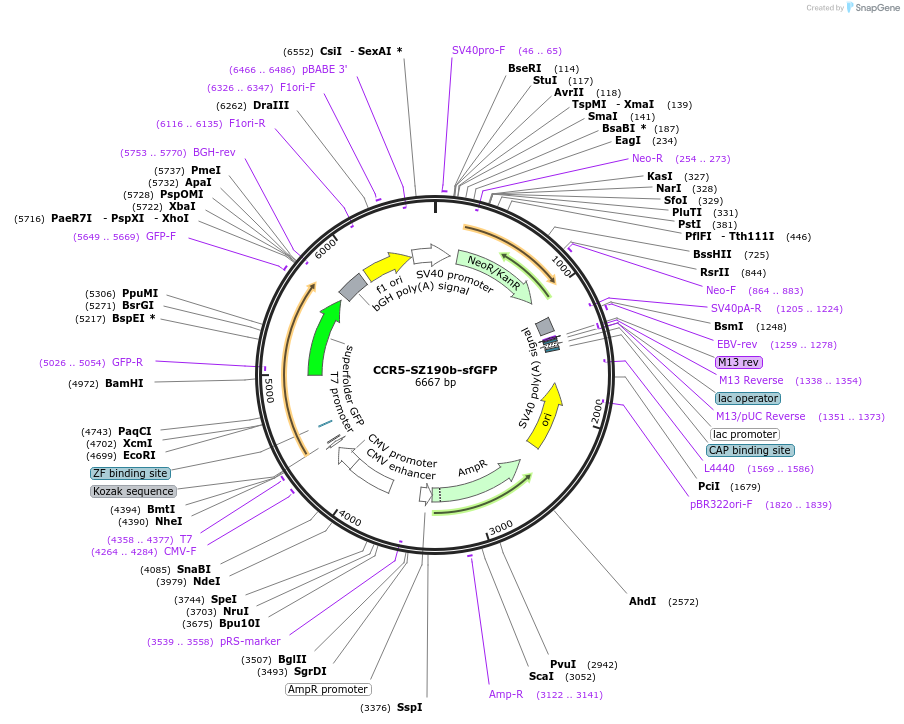CCR5-SZ190b-sfGFP
(Plasmid
#162447)
-
PurposeExpression in HEK293T cell and compete ligand singaling against full-length receptors, the truncated receptor can perform signaling at high ligand concentration
-
Depositing Lab
-
Sequence Information
Ordering
| Item | Catalog # | Description | Quantity | Price (USD) | |
|---|---|---|---|---|---|
| Plasmid | 162447 | Standard format: Plasmid sent in bacteria as agar stab | 1 | $85 | |
Backbone
-
Vector backbonepcDNA3.1
- Backbone size w/o insert (bp) 6100
- Total vector size (bp) 6665
-
Vector typeMammalian Expression
-
Selectable markersNeomycin (select with G418)
Growth in Bacteria
-
Bacterial Resistance(s)Ampicillin, 100 μg/mL
-
Growth Temperature37°C
-
Growth Strain(s)DH5alpha
-
Copy numberHigh Copy
Gene/Insert
-
Gene/Insert nameC-C chemokine receptor type 5
-
Alt nameCD195
-
SpeciesH. sapiens (human)
-
Mutationtruncation from aa88 to aa249
-
Entrez GeneCCR5 (a.k.a. CC-CKR-5, CCCKR5, CCR-5, CD195, CKR-5, CKR5, CMKBR5, IDDM22)
- Promoter CMV
Cloning Information
- Cloning method Gibson Cloning
- 5′ sequencing primer CMV Forward (Common Sequencing Primers)
Resource Information
-
Supplemental Documents
Terms and Licenses
-
Academic/Nonprofit Terms
-
Industry Terms
- Not Available to Industry
Trademarks:
- Zeocin® is an InvivoGen trademark.
These plasmids were created by your colleagues. Please acknowledge the Principal Investigator, cite the article in which the plasmids were described, and include Addgene in the Materials and Methods of your future publications.
-
For your Materials & Methods section:
CCR5-SZ190b-sfGFP was a gift from Shuguang Zhang (Addgene plasmid # 162447 ; http://n2t.net/addgene:162447 ; RRID:Addgene_162447) -
For your References section:
Non-full-length Water-Soluble CXCR4(QTY) and CCR5(QTY) Chemokine Receptors: Implication for Overlooked Truncated but Functional Membrane Receptors. Qing R, Tao F, Chatterjee P, Yang G, Han Q, Chung H, Ni J, Suter BP, Kubicek J, Maertens B, Schubert T, Blackburn C, Zhang S. iScience. 2020 Oct 28;23(12):101670. doi: 10.1016/j.isci.2020.101670. eCollection 2020 Dec 18. 10.1016/j.isci.2020.101670 PubMed 33376963






